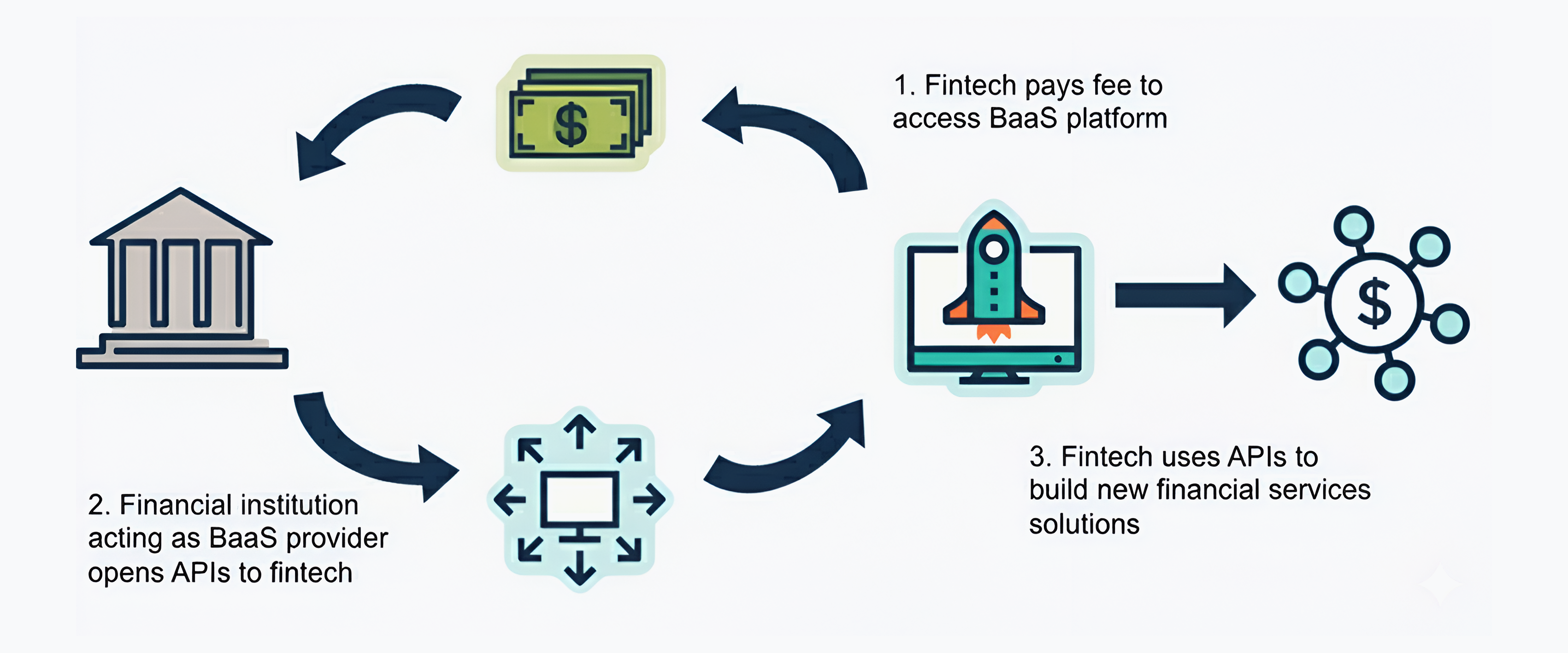Enabling non-bank businesses to embed financial services into their applications


Banking-as-a-Service (BaaS) is a model where licensed banks expose their infrastructure and core banking functionality to non-bank businesses through secure APIs. This enables companies such as fintech startups, e-commerce platforms, and tech firms to embed financial services directly into their applications, without becoming banks themselves.
Using BaaS, organizations can offer services like:
The BaaS provider acts as the middleware between the regulated financial institution and the non-bank company, abstracting compliance, infrastructure, and banking complexities.
Provides core banking capabilities via APIs
Acts as a bridge – managing API exposure, compliance, and scalability
Embed banking services directly into their apps or platforms
Interact with financial features without ever knowing a bank is involved
Build neobanks or launch digital-first financial products without a banking license.
Integrate embedded finance—such as BNPL, instant checkout, or in-app wallets—into the shopping experience.
Pay contractors and freelancers instantly, offer debit cards, or manage in-app earnings.
Extend infrastructure to third parties, create new B2B revenue streams, and reach new segments.
Add value with financial services like expense management, invoicing, or investment tracking features.
| Component | Description |
|---|---|
| User Management | Registration, login, authorization, and profile features |
| Security | Multi-factor authentication, encryption, fraud prevention |
| Cloud Storage | Scalable, secure storage for user and transaction data |
| Push Notifications | Real-time alerts and updates, even when app is idle |
| Cloud Code | Run server-side logic (e.g. risk checks, data processing) |
| Analytics | Track usage, engagement, transactions, and behavior |
| API Integrations | Easily connect with banks, KYC providers, payment rails, and more |
| Social Logins | Allow sign-in with platforms like Google, Facebook, and Apple |
Launch financial products quickly—no need to build core infrastructure or navigate regulation from scratch.
Avoid the capital costs of bank licensing or infrastructure; pay as you grow.
Build branded financial services using developer-friendly APIs tailored to your UX.
Rely on BaaS providers to handle complex financial regulations, KYC/AML, and auditing.
Utilize cutting-edge features like AI for credit scoring or blockchain for secure transactions.
Let the BaaS partner manage infrastructure—so your team can focus on customer experience and growth.
When selecting a BaaS provider, evaluate:
